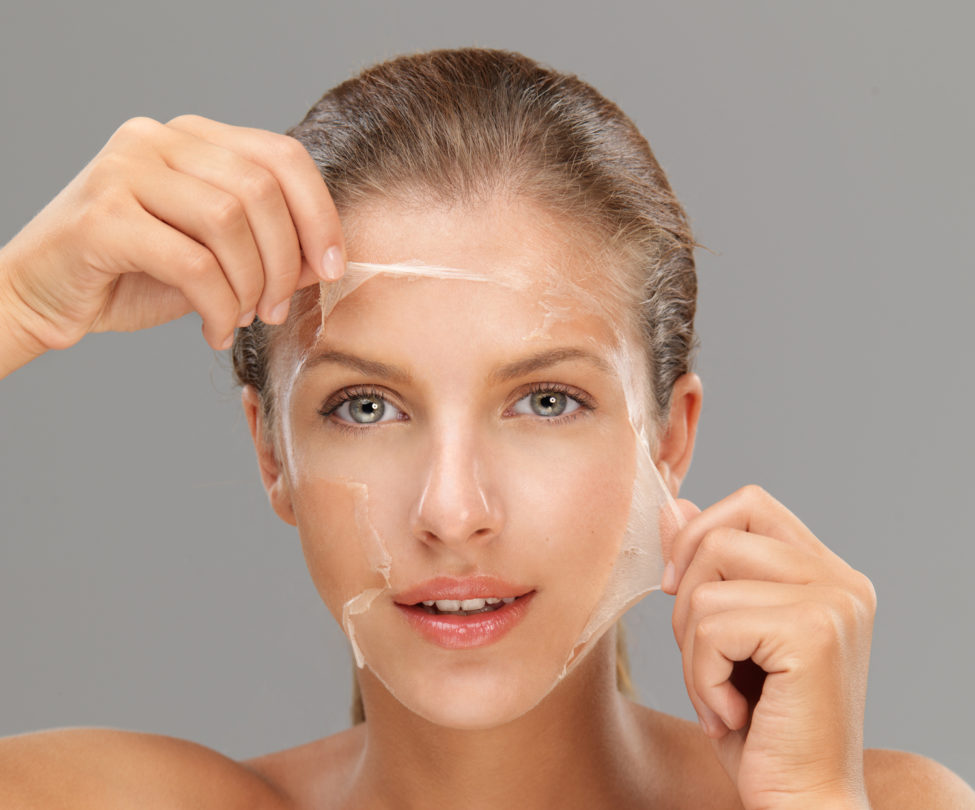Introduction to Chemical Peels
What is a Chemical Peel?
A chemical peel is a cosmetic procedure that involves applying a chemical solution to the skin. This solution causes the top layers of the skin to peel off, allowing new, smoother, and healthier skin to emerge. Chemical peels can be done on the face neck or hands. The treatment can improve the appearance of fine lines acne scars dark spots, and uneven skin tone.
How Chemical Peels Work
Chemical peels work by exfoliating the skin. The chemical solution applied to the skin penetrates its surface and triggers a controlled shedding of the outer layers. As the old, damaged skin cells are removed, the body produces new skin cells, leading to a brighter and more even complexion.
Types of Chemical Peels
There are different types of chemical peels available in Pakistan, each with varying strengths and purposes. The type of peel you choose depends on your skin type and the results you want to achieve.
1. Superficial Peels
Superficial peels are the mildest type of chemical peel. They use a mild acid, like alpha-hydroxy acid, to gently exfoliate the outer layer of the skin. This type of peel is suitable for all skin types and is often used to improve the appearance of mild skin discoloration and rough texture. The recovery time is short, and you can expect minimal peeling.
2. Medium Peels
Medium peels penetrate deeper into the skin, using stronger acids like glycolic or trichloroacetic acid. This type of peel is effective for treating moderate skin discoloration, age spots, and fine lines. The recovery time is longer, usually about a week and you may experience some redness and peeling.
3. Deep Peels
Deep peels are the most intensive type of chemical peel. They use strong acids, such as phenol, to deeply penetrate the skin. Deep peels are used to treat severe wrinkles, deep scars, and significant sun damage. The recovery time can be several weeks, and the results are long-lasting. This type of peel is usually done once and is not recommended for darker skin tones due to the risk of scarring.
Benefits of Chemical Peel Treatment
Chemical peel treatments offer a range of benefits for your skin. Here’s why you might consider getting one:
1. Reduces Fine Lines and Wrinkles
As you age, fine lines and wrinkles become more noticeable. Chemical peels can help reduce these signs of aging by stimulating the production of new skin cells and collagen, resulting in smoother and more youthful-looking skin.
2. Improves Skin Texture
Chemical peels can significantly improve the texture of your skin by removing rough and uneven layers. This leads to softer, smoother skin with a more even tone.
3. Fades Dark Spots and Discoloration
Dark spots, sunspots, and hyperpigmentation can be frustrating. Chemical peels help to lighten these areas by exfoliating the top layer of skin, revealing a more even complexion underneath.
4. Treats Acne and Acne Scars
If you struggle with acne or have lingering acne scars, chemical peels can help. The treatment unclogs pores, reduces inflammation, and promotes the healing of acne scars.
5. Boosts Skin Radiance
Overall, chemical peels leave your skin looking brighter and more radiant. The removal of dead skin cells allows your skin to reflect light better, giving you a healthy glow.
What to Expect During a Chemical Peel Treatment
If you’re considering a chemical peel treatment in Pakistan, it’s important to know what to expect during the process. Here’s a step-by-step guide to help you prepare.
1. Consultation
Before your treatment, you’ll have a consultation with a skincare professional. They will assess your skin type, discuss your goals, and recommend the best type of peel for you. It’s important to disclose any medical conditions or medications you’re taking, as these can affect the treatment.
2. Preparation
On the day of the treatment, your skin will be thoroughly cleansed to remove any dirt, oil, or makeup. Depending on the type of peel, your skincare professional may apply a numbing cream to reduce any discomfort.
3. Application of the Chemical Solution
The chemical solution will be carefully applied to your skin using a brush or cotton applicator. You may feel a slight tingling or burning sensation as the solution works on your skin. The length of time the solution stays on your skin depends on the type of peel and your skin’s response.
4. Neutralization and Removal
Once the desired level of exfoliation is achieved, the chemical solution will be neutralized and removed from your skin. Your skin may be treated with a soothing ointment or moisturizer to help with the healing process.
5. Post-Treatment Care
After the treatment, your skin may be red and sensitive. It’s important to follow the post-treatment care instructions provided by your skincare professional. This may include avoiding sun exposure, using gentle skincare products, and keeping your skin moisturized.
Recovery and Aftercare
The recovery time after a chemical peel varies depending on the depth of the peel. Here’s what to expect:
1. Superficial Peels
For superficial peels, recovery is quick. You may experience some mild redness and flaking, which should resolve within a few days. You can return to your normal activities almost immediately.
2. Medium Peels
Medium peels require more downtime. Your skin may be red, swollen, and peel for about a week. It’s important to avoid picking at the peeling skin to prevent scarring. Sun protection is crucial during this time.
3. Deep Peels
Deep peels have the longest recovery time. Your skin will be red, swollen, and may ooze for several days. The peeling process can take up to three weeks. You’ll need to follow a strict skincare routine and avoid sun exposure during this time.
Potential Risks and Side Effects
While chemical peels are generally safe, there are some potential risks and side effects to be aware of:
1. Redness and Swelling
Redness and swelling are common side effects of chemical peels, especially with medium and deep peels. These symptoms typically subside as the skin heals.
2. Sensitivity to Sunlight
Your skin will be more sensitive to sunlight after a chemical peel. It’s important to protect your skin from the sun by wearing sunscreen and avoiding direct sun exposure.
3. Hyperpigmentation or Hypopigmentation
In some cases, chemical peels can cause changes in skin color. Hyperpigmentation (darkening of the skin) or hypopigmentation (lightening of the skin) can occur, especially in individuals with darker skin tones.
4. Infection or Scarring
Though rare, there is a risk of infection or scarring, particularly with deep peels. It’s important to follow all aftercare instructions and contact your skincare professional if you notice any signs of infection.
Chemical Peel Treatment Right for You?
Chemical peel treatment in Pakistan offers a powerful solution for those looking to improve their skin’s appearance. Whether you want to reduce fine lines, fade dark spots, or achieve a smoother complexion, there’s a chemical peel that can meet your needs. However, it’s important to consult with a skincare professional to determine the best type of peel for your skin type and goals.




